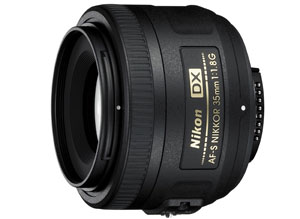

Its versatile range means you can easily go from shooting a wide scene, such as an interview to grabbing B-Roll. AF-S NIKKOR 24-70mm f/2.8G ED-With a traditional focal length range of 24-70mm, the NIKKOR 24-70mm lens is a favorite for filmmakers shooting everything from feature films to run and gun style.This lens is a favorite of DPs and filmmakers both in Hollywood and in the Indie scene because of its superior sharpness and unique focal length range paired with the f/2.8 aperture, which allows for more light and depth of field control.

The focal range of 14-24mm means you get a very wide angle of coverage while maintaining incredible sharpness across the frame.

The most popular lenses for video won’t surprise any seasoned filmmaker or even photographers for that matter, they are the most popular and desired lenses for these applications because of their superior optics and unique perspectives: This means the multiplier is 3x-the higher the multiplier doesn’t necessarily mean you have a better lens, simply one that has a longer zoom capability from its base focal length. A 24-70mm lens would then become 70/24 = ~3x. One last quick tip regarding zoom lenses-you can calculate how many times a zoom lens zooms by dividing the longer focal length listed on the lens by the shorter focal length. To cover all the focal lengths in a zoom lens, you would need many prime lenses, which you may not be able to have with you while you are shooting-a zoom lens also means you don’t have to stop shooting to change lenses.
Best bokeh lens for nikon d3300 professional#
Of course professional zoom lenses are also optimized for the range that they cover so that image quality is pristine as you zoom in and out-the advantage of the zoom is obvious, it acts as many lenses in one. Though zoom lenses usually cannot achieve f/stop numbers as low as prime lenses, professional grade zoom lenses can usually go as low as f/2.8, which means quite a lot of light is hitting the sensor, giving you a great amount of control over depth of field. These zoom lenses are sometimes referred to as “Variable Focal Length” lenses, which is a more descriptive title for what these lenses do-they allow the focal length to “vary” as you zoom in. For example, a lens that has a 24-70mm focal length range means that it can zoom from 24mm up to 70mm. Zooms: zoom lenses are lenses that allow for zooming from one focal length to another.“Prime” lenses are often referred to as “Fixed Focal Length” lenses-this is due to the “fixed” or static nature of their optics. In addition, prime lenses typically have lower f/stop numbers or maximum apertures, which means that they can allow more light to hit the sensor, which ultimately allows for more creative control over your video that can mean better control over the light in the scene as well as control over the depth of field for that dreamy shallow depth of field (bokeh) look. This may seem like a disadvantage, but in fact what it allows is for optics that are perfectly crafted for that one focal length, and therefore it is well understood that Prime lenses typically have superior performance because of that. In simple terms, this means when you use a prime, you can’t zoom in or out-you’re stuck with one view. Primes: lenses that are called “prime” are lenses with fixed focal lengths.Advanced users may wish to skip ahead, but for those who are getting started and/or want a refresher, read on as we cover these two types of lenses: This is a question every filmmaker should first answer before going into the lens selection process. However, we are able to give you a head start in solving this challenge by telling you what the most popular Nikon lenses for video are.īefore we get into exact models, let’s first solve for one important factor: Primes or Zooms? So, what we are trying to say is that there is no “best” when it comes to matching a look to your vision-you own that part of the equation, and should solve accordingly. This is a very common question among beginners and pros-basically anyone looking to finely hone the craft of constructing a scene will pay extra care to the lens selection to ensure what the camera sees matches their vision. Each lens has its own unique set of qualities and characteristics that makes it perfect for a certain scene, and this inevitably prompts users to ask-which lenses are the best for shooting video? One of the biggest advantages of shooting video with a DSLR camera is the great lens selection available to shoot with.


 0 kommentar(er)
0 kommentar(er)
